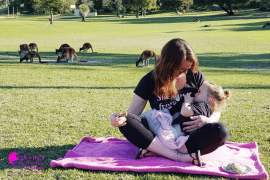By Dannielle Illingworth
As a naturopath and kinesiologist, I’ve worked with hundreds of women who want to change their eating habits and lose weight. And one of the biggest barriers in all of those women is emotional eating.
Emotional eating is basically a tendency to use food as a source of comfort: a habit of eating to soothe your emotions. So why do we do it, and how can we break the habit?
So often as young children, we are soothed with food – when we scrape our knee, or when we get a needle at the doctor’s office, or when we’re having a meltdown. Caregivers and other adults will often offer us a “treat” of some kind in an attempt to calm us down and soothe our emotional outbursts. We’re basically being trained from a young age that food equals feeling better.
Emotional eating is basically a tendency to use food as a source of comfort: a habit of eating to soothe your emotions.
As children, we’re also taught that some emotions are good, and some emotions are bad. Meaning, you’re allowed to laugh and smile and be happy, but you might have been punished or disciplined for showing emotions such as anger, frustration, or even sadness. And then you grow into an adult who still labels emotions as “good” and “bad”, so when a “bad” emotion does arise, you don’t know what to do with it. So you eat to numb the feeling and avoid processing it or expressing it.
You might have also observed adults in your life who were emotional eaters, and picked up similar habits just by watching them do it.
The reason it’s so important to look at why we emotionally eat is that awareness of where the habit came from is your starting point in changing the habit.
So if that’s why we do it and where it all started from, what’s next? How do we stop emotionally eating?
It’s not about willpower, restriction, or anything like that. It actually needs to start with emotional awareness.
The reason it’s so important to look at why we emotionally eat is that awareness of where the habit came from is your starting point in changing the habit.
The process to overcoming emotional eating looks like this:
- Feel the urge to use food as comfort (i.e. “emotional craving”).
- Acknowledge that this is an emotional craving, not physical hunger.
- Notice the emotion or feeling you are experiencing, and give it a name. It might be sadness, loneliness, anger, frustration, rejection, fear… there’s no right or wrong, just give it a name so we can work with it.
- Find a way to express and process that emotion, without using food.
Step number four takes some practice, but over time you’ll start to develop a kind of emotional “toolkit” – a list of things you know will help you to process and express your emotions in healthy and helpful ways, without food.











